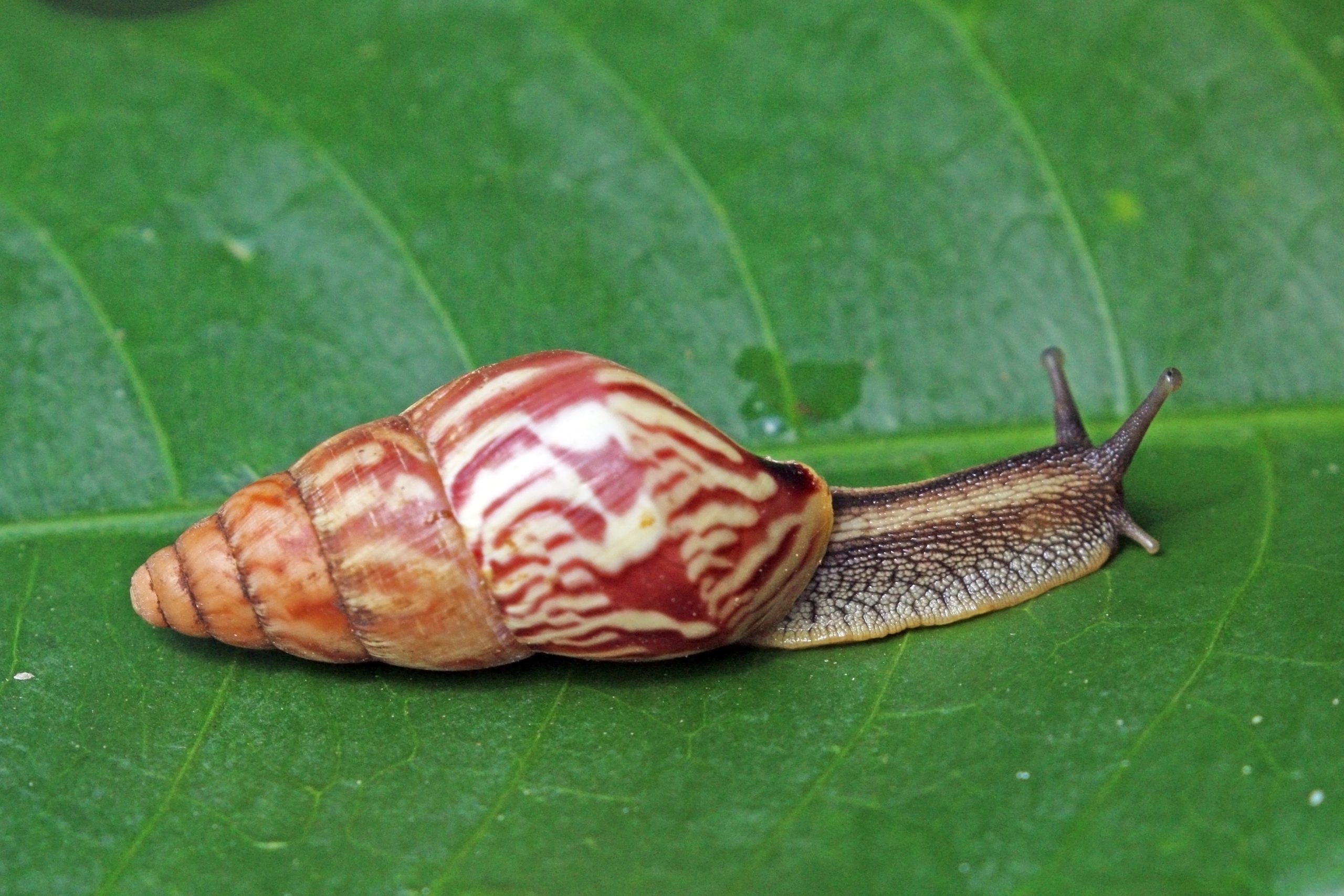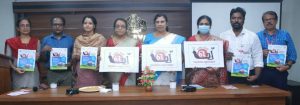The Kottayam District Administration has started a seven-day campaign to spread awareness and eradicate the snails from the district.

Kerala witnessed a surge in the emergence of the African land snail (Achatina fulica), the species that is causing havoc in Kottayam, following the floods of 2018 and 2019. (Creative Commons)
Kerala’s Kottayam district is under a deadly snail attack.
The marauders are far from tiny — they are a little under a kilogram in weight and reach a length of 20 centimetres — and are eating up much of what local farmers grow, including one of the state’s most prized crops: bananas.
Worst of all, they are causing meningitis among children.
“Health issues, crop loss, social panic, all of these come along with the snails,” District Collector PK Jayasree told South First.
Where did they emerge from? It all boils down to the rains. Kerala witnessed a surge in the emergence of the African land snail (Achatina fulica), the species that is causing havoc in Kottayam, following the floods of 2018 and 2019.
The monsoon rains this year only served to spread the scourge. And the snails are seemingly multiplying with impunity, as they face no real threat — from humans or animals.
Ducks could have been a solution; as Domi John Morias of the District Health Education said, the bird thrives on this variety of snails. “But we don’t have that many ducks in the Kottayam district,” he told South First.
The reason for this, Morias explained, was that duck farming had not caught on in Kottayam, and that in turn was because it had fewer lakes than, say, the districts of Alappuzha and Ernakulam.
This variety of African snail is also edible, but here too there is a problem: The locals have not yet developed a taste for it. [If the locals do develop a taste for the African land snail, here is a recipe they could try — Editor.]
On the other hand, these snails have a liking for what Kerala grows, much to the despair of Kottayam’s farmers.
“In Kerala, it is estimated that these snails can damage 300-350 crops, which include banana, papaya, ginger, turmeric, taro, and cauliflower,” says an official report.
The report, published jointly by the Kerala Agriculture University’s Agriculture Knowledge Centre in Kottayam, and the Banana Research Station at Kannara in Thrissur, says the snail is classified as one of the world’s top 100 invasive alien species.
These snails can weigh up to 1 kg. However, the report suggests those seen in Kerala are of a maximum weight of 500-750 grams.
Among the crops it has devoured in the state, the report says “the most significant loss has been reported in banana trees”.
What is most alarming is that its excreta can cause meningitis in kids, a disease that can lead to inflammation of the brain and spinal-cord membranes.
According to Morias, 18 such cases have been reported in Kerala, though none of them is from Kottayam.
Harassed farmers say they have tried many things to fight the menace, but most have not borne fruit.
“One effective way is to flip the snails over and pour salt on them so that they will die,” said Kaipparatte Abraham, a farmer who says almost all his vegetable crop has been damaged by the snails.
But physically tackling the snails is not always possible, Abaraham conceded. “We can’t pour salt on our land so we do it only when these can actually be seen,” he said.
An agricultural officer had come to visit Abaraham’s area near Uzhavoor in Kottayam following complaints lodged with the panchayat, but he claimed: “So far no significant action has been taken”.

The launch of the campaign Paadam Onnu- Ochu (Lesson One- Snail) by the district administration. (Supplied)
The district administration launched a weeklong campaign on 25 August titled “Lesson one – Snail” to spread awareness of the threat so that it can be eradicated.
“At the moment this is not merely an issue of the crop loss, the secretion of these snails causes meningitis in kids,” said District Collector Jayasree. “Cases have been reported from places such as Ernakulam.”
The “One Health” programme, devised by the state government, seeks to “keep the environment healthy”; the health of humans, animals and the soil come under its ambit.
“As we know, prevention is better than cure,” she said.

Jul 26, 2024

Jul 26, 2024

Jul 25, 2024

Jul 25, 2024

Jul 25, 2024

Jul 24, 2024